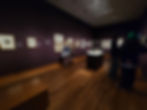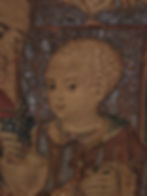Party Like It’s 1599
- 6 days ago
- 4 min read
Written by Kylee Herrick
An analysis of the Cleveland Museum of Art’s recent exhibition about wine’s role in mythology and history.

Wine is an alcoholic beverage made from fermented grape juice. In many forms of media, it is associated with middle aged mothers and pretentious art fanatics. To an ancient Greek or medieval Catholic, wine was a sacred rite. It was dangerous, fantastical and deeply rooted in their connection to religion and spirituality. Wine was the truth potion in which secrets and revelations would be unveiled.
“In Vino, Veritas (In Wine, Truth)” is a currently running exhibition at the Cleveland Museum of Art which explores these historical, European beliefs surrounding wine throughout the fifteenth to nineteenth-centuries.

The exhibition features artworks which imbed wine as a symbol or literal subject within them. I was pleased by the wide array of various mediums: paintings, prints, and objects by European artists stemming anywhere from Germany to Bohemia.
I first explored the room to the left when you enter the museum’s downstairs galleries. This room is centered around depictions and adaptations of ancient Bacchal rituals – ancient Greco-Roman parties which honored the Roman deity, Bacchus (in Greek, Dionysus) – from Italian Renaissance and Northern European artists.

The pieces featured figures lost in drunkenness and celebration, oftentimes gleeful and at some points stained with a virtuous judgement.

Etchings and prints are often hung salon-style in this exhibition, a method that pairs works with similar subject matter together and can often show a hierarchy between the pieces. “Silenus” (1628) and “Bacchanal” (mid-1600s) are paired in this manner. Both of these artworks depict scenes of satyrs and nymphs partaking in splurges of wine and inebriated partying. These come from the interpretations and perspective of Spanish and Italian artists, respectively.
The symbolism of wine’s connection to these ancient, mythological themes is reshaped in the presented works from Northern Europe, connecting English and Flemish culture to ancient Greco-Roman festivities.

William Hogarth’s “Strolling Actresses Dressing in a Barn” (1738) is a piece from England which protested the government’s power to censor theatrical productions.
Hogarth did not shy away from poking fun at the subjects, depicting a chaotic atmosphere of drunken young people and actresses in dramatized poses. It is an English adaptation on the Bacchal rituals seen in the previous paintings.

In the center of the room, illuminated by light, were several vessels from Germany, England and Bohemia, all of which were used in the past – late fifteenth to early eighteenth-centuries – to consume wine and other beverages.
The goblets, glasses and cups were just as thoroughly detailed and finely crafted as the work hung on the wall; a testament to the revered practice of drinking wine. There were carvings of grape vines and painted landscapes which served to elevate their recreational use into an act of devotion.
This first room of the exhibit featured artworks which felt like windows into a party one was snooping in on, wine being the catalyst to be blamed.

The next room featured works which present wine in the context of the ‘Judeo-Christian’ tradition through biblical stories and characters.
Albrecht Dürer, a personal favorite, took up much of this section with his engravings which connect Christ to wine through images such as the Last Supper and the Crucifixion.
“The Last Supper” (1510) from “The Large Passion” series is an engraving which draws the viewer in with its bold lines and deep shading. It connects itself to wine through the practice of the Eucharist, which honors the Last Supper and the attribution of wine to the blood of Christ.
These pious works of art were quite the stark contrast from the easygoing atmosphere of the previous section, but it was still deeply insightful and thought-provoking, connecting the importance of wine to the deeply rooted customs of religion.

The furthermost wall in this room was centered completely on a tapestry which shares similar themes to the previous work by Dürer, titled “The Mystical Grapes” (about 1500). The tapestry is quite small in-person and portrays an infant Christ squeezing grape juice into a chalice, also symbolic of the gift of his own blood.
I was intrigued by this tapestry as it showed the infant in an active role, rather than placed in the Virgin Mary’s lap, and making firm eye contact with the viewer. It was the last piece I analyzed and seemed to be an effective finale; infant Christ directly showing the viewer the significance of wine in the Christian religion, pouring the onlooker a glass.
Overall, “In Vino, Veritas (In Wine, Truth)” serves as an entertaining, insightful lens into human behavior and the role wine has played in human pleasure, devotion, celebration and wallowing.
It was a worthwhile experience exploring the over seventy artists, a majority of which are from the museum’s permanent collection, and whose work is interconnected across over three-hundred years through the influence of wine.
The exhibition runs until January 11, 2026 and is located in room 101A-B: Prints and Drawings. It is free and open to the public.




